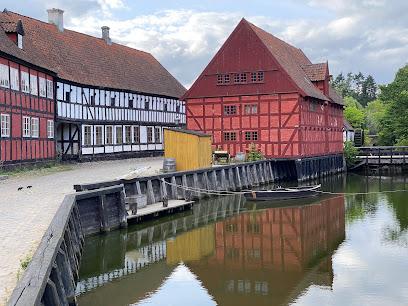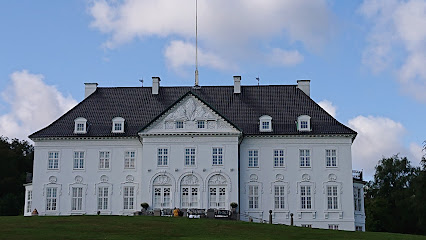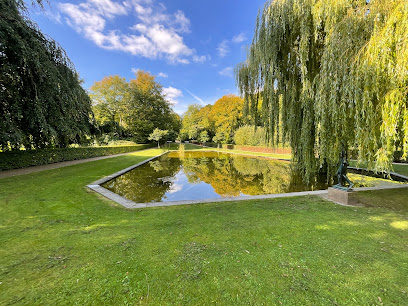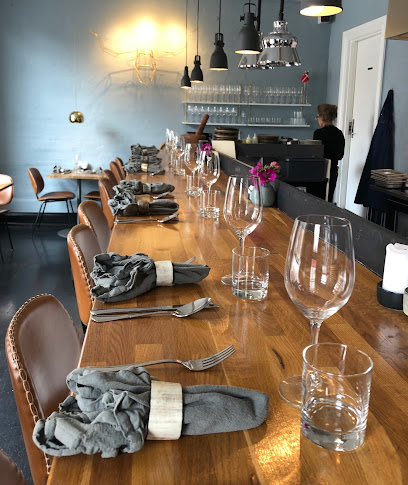
Aarhus: Denmark's Hidden Gem
Discover Aarhus, Denmark's second-largest city, where ancient history meets modern culture. Explore historical sites, vibrant arts, and a thriving food scene in the City of Smiles.
Aarhus, Denmark's second-largest city, is a blend of ancient history and modern culture. This vibrant city offers a rich tapestry of experiences, from its charming old town to its cutting-edge architecture. Known as the City of Smiles, Aarhus is a place where visitors can enjoy a warm and welcoming atmosphere. Start your journey at the Aarhus Cathedral, the tallest and longest church in Denmark, dating back to the 12th century. Stroll through the Latin Quarter, a maze of narrow streets filled with boutique shops, cozy cafes, and historical buildings. Don't miss Den Gamle By (The Old Town), an open-air museum that takes you back in time with its meticulously restored buildings and streets from different eras. For art lovers, the ARoS Aarhus Art Museum is a must-visit. Its iconic rainbow panorama offers breathtaking views of the city. Nature enthusiasts will enjoy the Marselisborg Forests and the picturesque beaches along the coast. Aarhus is also home to a thriving food scene, with Michelin-starred restaurants and trendy food markets offering a taste of Denmark's culinary delights. Whether you're interested in history, art, nature, or food, Aarhus has something to offer every traveler. Its blend of old-world charm and contemporary flair makes it a unique destination that shouldn't be missed.
Local tips in Aarhus
- Visit Den Gamle By early in the morning to avoid the crowds and have a more immersive experience.
- Consider renting a bike to explore the city like a local; Aarhus is very bike-friendly with many dedicated lanes.
- Check out the Aarhus Street Food market for a variety of delicious and affordable meals from different cuisines.
- Visit the ARoS Aarhus Art Museum on a clear day to fully enjoy the panoramic city views from the rainbow rooftop.
- Use the AarhusCARD for free admission to museums, free public transport, and discounts at various attractions.
Neighbourhoods in Aarhus
Aarhus: Denmark's Hidden Gem
Aarhus, Denmark's second-largest city, is a blend of ancient history and modern culture. This vibrant city offers a rich tapestry of experiences, from its charming old town to its cutting-edge architecture. Known as the City of Smiles, Aarhus is a place where visitors can enjoy a warm and welcoming atmosphere. Start your journey at the Aarhus Cathedral, the tallest and longest church in Denmark, dating back to the 12th century. Stroll through the Latin Quarter, a maze of narrow streets filled with boutique shops, cozy cafes, and historical buildings. Don't miss Den Gamle By (The Old Town), an open-air museum that takes you back in time with its meticulously restored buildings and streets from different eras. For art lovers, the ARoS Aarhus Art Museum is a must-visit. Its iconic rainbow panorama offers breathtaking views of the city. Nature enthusiasts will enjoy the Marselisborg Forests and the picturesque beaches along the coast. Aarhus is also home to a thriving food scene, with Michelin-starred restaurants and trendy food markets offering a taste of Denmark's culinary delights. Whether you're interested in history, art, nature, or food, Aarhus has something to offer every traveler. Its blend of old-world charm and contemporary flair makes it a unique destination that shouldn't be missed.
When is the best time to go to Aarhus?
Iconic landmarks you can’t miss
The Old Town
Legendary Renaissance fortress in Helsingør, Denmark, and UNESCO World Heritage site, famous as Shakespeare’s Elsinore and for its dramatic setting by the Øresund.

ARoS Aarhus Art Museum
Step into the world of Shakespeare at Kronborg Castle, Denmark’s UNESCO-listed waterfront fortress, steeped in royal history and centuries of maritime legend.

Tivoli Friheden
Experience world-class acoustics and modern design at Malmö Live Concert Hall, the cultural heartbeat of Malmö.

Marselisborg Deer Park
Dynamic concert hall and cultural center in Malmö, Sweden, hosting world-class performances, contemporary architecture, and a vibrant urban experience near Copenhagen.

The Infinite Bridge
Aarhus' mesmerizing circular boardwalk over the bay, blending art, architecture, and sea views for a captivating experience on Denmark’s eastern coast.

Botanical Garden
Experience Denmark's artistic heritage and international masterpieces at SMK, Copenhagen's dynamic national gallery housed in landmark architecture beside the Kings’ Garden.

Marselisborg Castle
UNESCO-listed Renaissance fortress in Helsingør, famed as Hamlet’s castle—explore sumptuous halls, underground casemates, and sweeping views of the Øresund Strait.

University Park, Aarhus
Explore seven centuries of art at SMK – Denmark’s national gallery, marrying old masters, modern pioneers, and cutting-edge exhibitions in stunning parkland surroundings.

Aarhus Cathedral
Iconic Renaissance-era castle on Denmark’s northern coast, famed as Shakespeare’s Hamlet setting and a UNESCO World Heritage site steeped in royal history.

Viking Museum
Discover Aarhus’ Viking roots through original archaeological finds, immersive displays, and digital storytelling at this underground museum in the heart of the city.

Klostertorvet
Historic plaza at the centre of Aarhus, Denmark, offering a lively blend of medieval charm, cozy cafés, local events, and vibrant urban atmosphere.

Steno Museum
Delve into science, medicine, and the cosmos at Aarhus’s Steno Museum—a family-friendly hub offering interactive exhibits, a planetarium, and medicinal gardens.

KØN - Gender Museum Denmark
Explore Denmark’s greatest art treasures at SMK – Statens Museum for Kunst, where centuries of Danish and European masterpieces inspire and captivate in the heart of Copenhagen.

Rådhusparken
A central, tranquil green space blending local life, modern sculptures, and city history, nestled beside Aarhus City Hall and within walking distance to main attractions.

Mølleparken
Denmark’s national gallery showcasing centuries of Nordic and European art, iconic masterpieces, modern creativity, and interactive cultural experiences in Copenhagen.

Unmissable attractions to see
The Old Town
Denmark’s living museum where real streets, shops, and people bring centuries of urban history to life in the heart of Aarhus.

ARoS Aarhus Art Museum
Aarhus University Park blends scenic green spaces, serene lakes, and iconic architecture—offering a tranquil escape and vibrant academic atmosphere in Aarhus' city heart.

Moesgaard Museum
Discover celestial wonders and Danish scientific history at Ole Rømer Observatory, a working stargazer’s haven perched amid Aarhus’ tranquil woodland.

Tivoli Friheden
Experience the thrill and charm of Tivoli Friheden, Aarhus' historic amusement park offering rides, concerts, and seasonal festivals for all ages.

Musikhuset Aarhus
Aarhus University Park blends lush green spaces and tranquil lakes with iconic Danish architecture, serving as a serene and historic heart of academic and public life in Aarhus.

Marselisborg Deer Park
Experience Copenhagen’s unique fusion of industrial heritage and creative culture atop the historic Culture Tower on Knippelsbro, with sweeping harbor views.

Botanical Garden
Marselisborg Strand, Aarhus’s urban beach, offers scenic sands, swimming, and panoramic bay views right next to Marselisborg Palace and lush forest paths.

Marselisborg Castle
Urban beachside tranquillity meets Danish hygge at Marselisborg Strand, where sandy shores, forest edges, and sweeping bay views create Aarhus’ favourite seaside retreat.

Aarhus Cathedral
Discover the timeless charm of Aarhus' Latin Quarter, where history, culture, and modern vibrancy converge.

Mindeparken
Perched atop the historic Knippels Bridge, the Culture Tower offered panoramic views, creative exhibits, and a taste of Copenhagen’s cultural renaissance.

University Park, Aarhus
Discover Aarhus University Park: an idyllic blend of modernist architecture, tranquil lakes, and vibrant campus life in the center of Denmark’s cultural capital.

Dokk1
Elegant green heart of Aarhus, University Park blends historic architecture, tranquil lakes, and seasonal blooms—a beloved oasis for locals, students, and visitors alike.

Aarhus Theatre
Aarhus University Park blends Danish design and lush greenery into a tranquil urban oasis with iconic architecture, scenic lakes, and vibrant campus life year-round.

Sherlock Holmes Pub
Discover Aarhus’ charismatic Latin Quarter—a labyrinth of cobbled streets, lively cafés, creative boutiques, and historic charm at the city’s vibrant core.

Viking Museum
The Latin Quarter of Aarhus blends cobbled medieval charm with modern creativity in Denmark’s oldest, cosiest, and most atmospheric city neighborhood.

Essential places to dine
Madklubben Århus
Madklubben Århus offers innovative Danish and European cuisine in a stylish, lively setting—perfectly situated near Aarhus’s top cultural attractions for an accessible dining experience.

KöD Aarhus
Savour premium steaks, elegant ambiance, and riverside views at KöD Aarhus — the city’s signature steakhouse offering elevated social dining in central Aarhus.

Teater Bodega
Teater Bodega serves up timeless Danish classics and cozy tradition in the heart of Aarhus, where culinary heritage and theatrical history create a beloved atmosphere.

Restaurant Kohalen
Indulge in traditional Danish smørrebrød and warm hospitality at Restaurant Kohalen, an iconic Aarhus lunch spot beloved for its historic roots and authentic atmosphere.

Mefisto Restaurant & Gårdhave
Tranquil courtyard dining and exceptional seafood set in the historic heart of Aarhus’s Latin Quarter—Mefisto is a must-visit for food-loving explorers.

Restaurant ET
Savor classic French cuisine with modern Danish flair in a stylish riverside setting—Restaurant ET is a culinary highlight at the heart of Aarhus C.

Casablanca Aarhus
Casablanca Aarhus: A beloved Latin Quarter brasserie blending French-Danish cuisine, vibrant café life, and prime terrace people-watching in historic city surroundings.

Lecoq
Experience modern French cuisine at Lecoq in Aarhus - where culinary artistry meets vibrant ambiance.

Basso Aarhus
Basso Aarhus serves modern Italian tasting menus in an elegant, Scandinavian-inspired setting, offering a unique social dining experience in the heart of Aarhus.

Den Lille Kro
Nestled in central Aarhus, Den Lille Kro delights with traditional Danish comfort food, nostalgic ambiance, and an authentic taste of local culinary heritage.

Restaurant MellemRum
Modern Nordic bistro in central Aarhus offering locally inspired seasonal menus, inventive Danish-European dishes, and a welcoming, lively atmosphere.

Restaurant Anker
Aarhus harbor’s premier destination for fresh seafood, brasserie classics, and scenic marina views in a vibrant, maritime-inspired setting.

Slap Af
Experience exquisite dining at Slap Af in Aarhus C – where traditional flavors meet innovative cocktails in a vibrant atmosphere.

St. Pauls Apothek
Aarhus’ historic pharmacy-turned-cocktail-restaurant delivers innovative mixology, Nordic cuisine, and a unique blend of old-world charm and contemporary flair.

Møf
Experience innovative Danish cuisine at Møf, a Michelin-recognized gem in Aarhus, Denmark.

Travel experiences inspired by this city
Explore more travel diariesLocal Phrases
-
- HelloHej
[hey] - GoodbyeFarvel
[far-vel] - YesJa
[ya] - NoNej
[nay] - Please/You're welcomeVær så god
[ver sa go] - Thank youTak
[tahk] - Excuse me/SorryUndskyld
[oon-skyld] - How are you?Hvordan har du det?
[vor-dan har doo deh] - Fine. And you?Godt. Og du?
[goht. oh doo] - Do you speak English?Taler du engelsk?
[ta-ler doo eng-el-sk] - I don't understandJeg forstår ikke
[yai for-stor ee-keh]
- HelloHej
-
- I'd like to see the menu, pleaseJeg vil gerne se menukortet, tak
[yai vil gehr-neh seh meh-noo-kor-teht tahk] - I don't eat meatJeg spiser ikke kød
[yai spee-ser ee-keh kerth] - Cheers!Skål!
[skowl] - I would like to pay, pleaseJeg vil gerne betale, tak
[yai vil gehr-neh beh-tah-leh tahk]
- I'd like to see the menu, pleaseJeg vil gerne se menukortet, tak
-
- Help!Hjælp!
[hyelp] - Go away!Gå væk!
[goh veh] - Call the Police!Ring til politiet!
[reeng teel poh-lee-tee-et] - Call a doctor!Ring efter en læge!
[reeng af-tehr en lay-eh] - I'm lostJeg er fortabt
[yai er for-tahb-t] - I'm illJeg er syg
[yai er soo]
- Help!Hjælp!
-
- I'd like to buy...Jeg vil gerne købe...
[yai vil gehr-neh ker-beh] - I'm just lookingJeg kigger bare
[yai kee-ger bah-reh] - How much is it?Hvor meget koster det?
[vor meh-geh kohs-ter deh] - That's too expensiveDet er for dyrt
[deh er for deer] - Can you lower the price?Kan du sænke prisen?
[kan doo sehn-keh pree-sehn]
- I'd like to buy...Jeg vil gerne købe...
-
- What time is it?Hvad er klokken?
[vah deh kloh-ken] - It's one o'clockDen er et
[dehn er eht] - Half past (10)Halv ti
[hahlv tee] - MorningMorgen
[mor-gen] - AfternoonEftermiddag
[ef-tehr-mee-dah] - EveningAften
[ahf-tehn] - YesterdayI går
[ee gohr] - TodayI dag
[ee dah] - TomorrowI morgen
[ee mor-gen] - 1Ét
[ayt] - 2To
[too] - 3Tre
[treh] - 4Fire
[fee-reh] - 5Fem
[fem] - 6Seks
[seks] - 7Syv
[suyv] - 8Otte
[oh-teh] - 9Ni
[nee] - 10Ti
[tee]
- What time is it?Hvad er klokken?
-
- Where's a/the...?Hvor er en/the...?
[vor er en/theh] - What's the address?Hvad er adressen?
[vah deh ah-drehs-sen] - Can you show me (on the map)?Kan du vise mig (på kortet)?
[kan doo vee-seh meeh (poh kohr-teht)] - When's the next (bus)?Hvornår er den næste (bus)?
[vor-nor er dehn neh-ste (boos)] - A ticket (to ....)En billet (til ....)
[en bee-let (teel)]
- Where's a/the...?Hvor er en/the...?
History of Aarhus
-
Aarhus, originally known as Aros, was founded by the Vikings in the 8th century. The name 'Aros' translates to 'river mouth', highlighting its strategic location at the mouth of the Aarhus River. Archaeological excavations in the city center have uncovered remnants of Viking longhouses and artifacts, giving a glimpse into the early life and culture of its inhabitants.
-
During the Middle Ages, Aarhus began to flourish as a significant trading hub due to its strategic position on the Jutland Peninsula. The construction of the Aarhus Cathedral, which began in the late 12th century, marked the city’s growing importance. By the 15th century, Aarhus had received its municipal charter, solidifying its status as a prominent city in Denmark.
-
The Reformation in the 16th century brought significant changes to Aarhus. The city’s religious landscape transformed as Denmark officially adopted Lutheranism. The dissolution of monasteries and the redistribution of church lands impacted the city's social and economic structures. Aarhus Cathedral, originally a Catholic church, became a Lutheran place of worship during this period.
-
The 19th century Industrial Revolution had a profound impact on Aarhus. The establishment of the Aarhus Docklands in the 1840s marked the beginning of its transformation into an industrial powerhouse. The city saw the rise of factories, improved infrastructure, and an influx of workers, contributing to rapid urban expansion and modernization.
-
During World War II, Aarhus was occupied by German forces from 1940 to 1945. The city played a strategic role due to its port and railway connections. Notably, Aarhus University was used by the Germans as a military headquarters. The resistance movement in Aarhus was active, and the city witnessed several acts of sabotage and resistance against the occupiers.
-
In the post-war period, Aarhus underwent significant development, emerging as a cultural and educational center in Denmark. The establishment of institutions such as Aarhus University has made it a hub for academic excellence. The city’s vibrant cultural scene is showcased through landmarks like ARoS Aarhus Art Museum and the annual Aarhus Festival, reflecting its dynamic and evolving identity.
Aarhus Essentials
-
Aarhus can be reached via Aarhus Airport (AAR), located about 40 km northeast of the city. International flights often connect through Copenhagen Airport (CPH), from where you can take a domestic flight to Aarhus. Alternatively, you can take a train from Copenhagen to Aarhus, which takes around 3 hours. Aarhus is also accessible by ferry from various ports, such as Sjællands Odde, and by bus services from major Danish cities.
-
Aarhus has an efficient public transportation system, including buses, light rail (Letbanen), and taxis. Buses and Letbanen serve most parts of the city and surrounding areas. Tickets can be purchased via the DOT app, at ticket machines, or from bus drivers. Biking is also popular, with numerous bike lanes and rental services available. For those preferring to drive, car rentals are widely available.
-
The official currency in Denmark is the Danish Krone (DKK). Credit cards are widely accepted in Aarhus, including Visa and MasterCard. Some places may also accept mobile payments via apps like MobilePay. It is advisable to carry some cash for smaller purchases or places that do not accept cards. ATMs are readily available throughout the city.
-
Aarhus is generally a safe city for tourists. However, standard precautions should be taken such as avoiding poorly lit areas at night and keeping an eye on your belongings in crowded places. While Aarhus does not have significant high-crime areas, tourists should be cautious in neighborhoods like Gellerup, particularly after dark.
-
In case of emergency, dial 112 for ambulance, police, or fire services. Aarhus University Hospital is the primary medical facility in the city. Pharmacies are available for minor health issues, and many have 24-hour service. It is recommended to have travel insurance that covers medical emergencies.
-
Fashion: Do dress in layers, as the weather can change quickly. Casual and smart-casual attire is generally acceptable. Religion: Do respect local customs, especially in religious sites. Remove hats and speak softly when in churches. Public Transport: Do be punctual and have your ticket ready. Don't talk loudly or place bags on seats. Greetings: Do greet people with a firm handshake. It's common to address people using their first name. Eating & Drinking: Do try local dishes like smørrebrød and Danish pastries. Don't leave a tip, as service charges are included in the bill, but rounding up is appreciated.
-
To experience Aarhus like a local, visit the Latin Quarter for unique shops and cafes. Attend a match at Ceres Park to see the local football team, AGF Aarhus, in action. Explore the city's many parks, like Marselisborg Palace Park, where locals often go for walks. Don't miss out on the local festivals, such as Aarhus Festuge, which showcases music, art, and culture.
Nearby Cities to Aarhus
-
Things To Do in Randers
-
Things To Do in Silkeborg
-
Things To Do in Horsens
-
Things To Do in Viborg
-
Things To Do in Vejle
-
Things To Do in Kalundborg
-
Things To Do in Herning
-
Things To Do in Odense
-
Things To Do in Kolding
-
Things To Do in Aalborg
-
Things To Do in Nyborg
-
Things To Do in Slagelse
-
Things To Do in Ribe
-
Things To Do in Roskilde
-
Things To Do in Hillerød
























